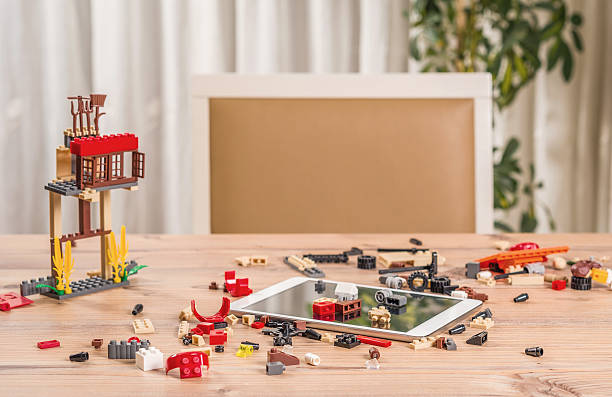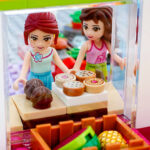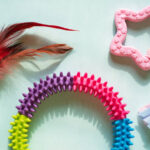A LEGO table is more than just a place to build toys; it’s a hub for creativity, organization, and learning. From bricks scattered underfoot to items that need constant cleanup, a well-designed LEGO table with storage can make a world of difference, whether you’re a parent trying to keep LEGO chaos under control or an adult hobbyist looking for the perfect workspace. But not all tables are created equal.
Research shows that dedicated play spaces like LEGO tables can significantly boost creativity and problem-solving skills, while also providing a structured environment that encourages organization and focus (Miracle Recreation, 2024). We’ll explore everything from the basics of choosing the right LEGO building table to advanced features that can elevate your building experience. Let’s take a deep dive into what makes LEGO tables a great choice and their world of innovation, exploring not only how they can simplify your space, but how they can inspire creativity, foster accountability, and even evolve as needed.
Why Every LEGO Lover Needs a Table with Storage—Not Just a Table
Most people probably default to thinking of a LEGO table as a cute piece of furniture. But a truly smart LEGO building table with storage is so much more. It is one of the solutions for organizing and storing LEGO bricks. It is not only limited to storing the fragments of bricks and displaying the whole built blocks, but also optimizes your storage space and maximizes the limited area for organization in a short time.It can act as a creative hub, an organizational system, and even a behavioral training tool.
a. Encouraging Independent Play
The best children’s LEGO tables are tailored to their height and reach, making independent play easier. When storage is built-in—like bins beneath the tabletop or drawers along the side—it teaches kids to clean up after themselves intuitively.
🔍 Example: IKEA’s FLISAT table (when customized with TROFAST bins) has become a cult favorite among Montessori-inspired parents for this very reason.
b. Preventing Brick Overload
Bricks multiply fast. A LEGO table with storage helps prevent the “dump and forget” cycle by categorizing bricks by size, type, or color. Built-in dividers or labeled compartments can significantly reduce clutter—and boost productivity during builds.
c. Improving Focus and Project Longevity
A dedicated table limits distractions and provides a stable environment for complex projects. Some tables even include removable tops to protect works-in-progress, encouraging long-term engagement.
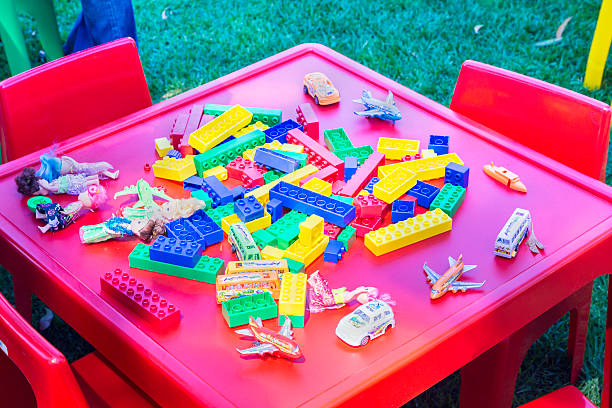
For Kids: The Impact of LEGO Table Ergonomics
When selecting or building a Lego table, ergonomics should be a top priority, especially for children. The table should be at a height that allows users to work comfortably without straining their back or neck. A general rule of thumb is that the table should be about waist height for the child. For younger children, this might mean a table that can be adjusted as they grow.
To measure the right height, have your child stand next to the table and check if their elbows are at a 90-degree angle when their arms rest on the surface. This position ensures comfortable building without fatigue. Here’s a quick guide to table heights by age group:
| Age Group | Recommended Table Height |
|---|---|
| Toddlers (2-4) | 18-20 inches |
| Preschoolers (4-6) | 20-24 inches |
| School-age (6-10) | 24-28 inches |
Some tables come with adjustable legs, which can be a great investment as your child grows. Proper ergonomics not only ensures comfort but also encourages longer, more focused building sessions, fostering creativity and fine motor skills (Parenting, 2023).
Are LEGO Table for People With ADHD?
LEGO tables can be especially beneficial for people with ADHD, both children and adults. While they’re not a clinical solution, they support many strategies used to manage ADHD-related challenges like inattention, impulsivity, and difficulty with organization.
| Benefit | Explanation | Why It Helps ADHD |
|---|---|---|
| Structured Workspace | Defined area for building with limited distractions | Reduces overstimulation and supports sustained attention |
| Hands-On, Multi-Sensory Play | Combines tactile, visual, and creative elements | Boosts engagement and promotes focus through active learning |
| Organizational Practice | Built-in bins and drawers encourage sorting and cleanup | Reinforces routines, executive functioning, and task completion |
| Emotional Regulation | Calm, repetitive activity with visible progress | Helps manage frustration, anxiety, and hyperactivity |
| Encourages Independence | Tables designed at child height promote self-guided play | Builds confidence and minimizes the need for constant supervision |
LEGO tables are more than just a convenience. They’re a smart, engaging, and therapeutic tool for people with ADHD. If designed with intention, they can improve focus, reduce stress, and encourage executive functioning—one brick at a time.
LEGO Storage Table Storage And DIY Customization Solutions
1.Storage Solutions
One of the main reasons to have a LEGO table with storage is to keep small bricks within easy reach. Storage is key to keeping your play area tidy and making it easy to find the bricks you need. Here are some effective storage solutions for your reference:
- Built-in Drawers: Many Lego building tables come with drawers or compartments underneath the building surface. These can be divided into sections for different colors or types of pieces, making it easy to locate specific bricks.
- Separate Storage Units: If you’re building your own table, you can add storage bins or shelves nearby. For example, IKEA’s TROFAST units are popular for their modular design and ample storage capacity.
- Bins and Baskets: For a flexible solution, use plastic bins or fabric baskets that can be placed under the table or on shelves. These are ideal for quick cleanup and can be labeled for easy organization.
Organizing LEGO bricks by color or type can make building projects easier. Consider labeling storage areas to help children learn to sort and find bricks independently. Not only does this keep their play area tidy, it also builds valuable organizational skills that can be transferred to other areas of their lives.
2.DIY LEGO Table with Storage: Custom Solutions That Actually Work
Commercial LEGO tables aren’t always the answer—especially if you’re aiming for function over flash. Sometimes, the best LEGO building tables are born from a little creativity and a weekend project.
a. The Raised Play Table Plan
This involves repurposing a coffee table or sturdy desk. Add a raised rim around the edges to prevent bricks from falling, and attach baseplates using double-sided tape or a glue gun. Slide storage bins underneath—or add shelving to the sides.
🔗 See full raised table plans on Ana White
b. Convertible LEGO Table for Small Spaces
In tight urban homes, space is gold. Consider a flip-top table with LEGO baseplates on one side and a flat writing surface on the other. Inside the flip-top? Compartmentalized brick storage. It’s equal parts minimalist and practical.
c. LEGO Wall + Table Hybrid
Mount shallow pegboards or magnetic strips above a table to hang instructions, mini builds, or containers. This vertical storage adds efficiency and keeps the tabletop open for creativity.
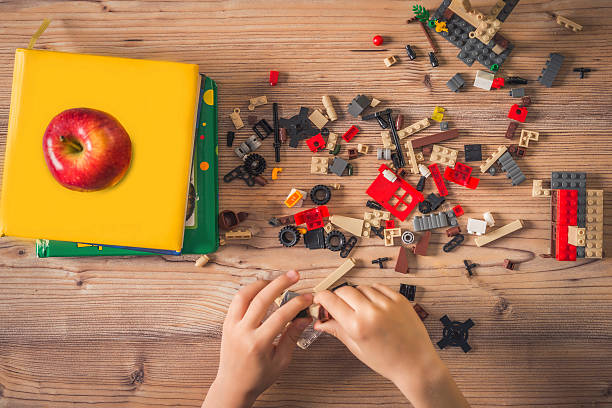
Multifunctional Design – What is The Best LEGO Table?
1.Multi-Functional Design
A great Lego table doesn’t have to be used only for Legos. Many designs allow for multiple uses, making them a versatile addition to your home. For example:
Removable Building Plates: Tables with removable plates can be used for meals, homework, or other activities when not in use for Legos.
Flip-Top Tables: Some tables have tops that can be flipped to reveal a smooth surface for drawing, writing, or other crafts. The KidKraft 2-in-1 Activity Table is a great example, offering a Lego-compatible surface on one side and a chalkboard on the other.
When choosing a multifunctional table, consider how it will fit into your home and what other activities you enjoy doing. A table that can double as a desk or craft station can maximize space, especially in a small home, making it a practical choice for families.
2.The Best LEGO Table: 3 Criteria You Can’t Ignore
There’s no one-size-fits-all LEGO table. The best LEGO table is determined by age-appropriateness, room size, and building style. But here are a few essentials, based on countless parent reviews and expert design insights:
a. Modular Storage
Look for a table with a mix of open compartments and closed drawers. Younger ones will prefer color-coded open storage, while older ones will prefer compartmentalized drawers for minifigures and specialty parts.
b. Baseplate Compatibility
Not all baseplates are created equal—make sure the table uses a standard LEGO-compatible baseplate that can be swapped out or removed as needed. (It’s even better if the baseplate sits flush with the tabletop.)
c. Ergonomic and Safety Design
Rounded corners, sturdy legs, and adjustable height are essential, especially for younger builders. Also look out for sustainable materials and finishes.
Thinking Outside the Box: Non-traditional Creative Embellishments
For those looking to create a truly unique Lego building table, consider unconventional designs that stand out from standard options. Here are a few inspiring ideas:
- Repurposed Furniture: Transform an old end table or coffee table by sanding it down, repainting it, and gluing Lego base plates to the top. This budget-friendly approach creates a custom Lego table with character (The Spruce Crafts, 2023).
- IKEA Hacks: Use IKEA’s TROFAST storage units to build a large, modular table. Stack the units to create a sturdy base and add a Lego-compatible surface on top. This design is movable and can be customized to fit your space, making it ideal for larger play areas (IKEA Hackers, 2022).
- Sliding Top Table: Build a table with a sliding top that reveals hidden storage underneath. This design keeps Legos out of sight when not in use but easily accessible for quick building sessions (I Like To Make Stuff, 2016).
These unconventional ideas show that a Lego table can be as unique as your imagination allows. They’re perfect for parents who want to add a personal touch or create a statement piece in their home.
Adding personal touches to your Lego table can make it even more special and inspire creativity. Paint the table in your child’s favorite color, add decals or stickers, or incorporate Lego elements into the design itself. Themed tables can spark imaginative building projects:
- Space-Themed Table: Paint the table with stars and planets to encourage children to build spaceships and extraterrestrial landscapes.
- Castle-Themed Table: Add turrets or medieval decals to inspire fortresses and knight-themed creations.
For those with DIY skills, consider advanced features like built-in LED lighting to illuminate building projects or a rotating surface for easy access to all sides of a creation. These creative touches not only make the table unique but also enhance the building experience, encouraging children to think outside the box.
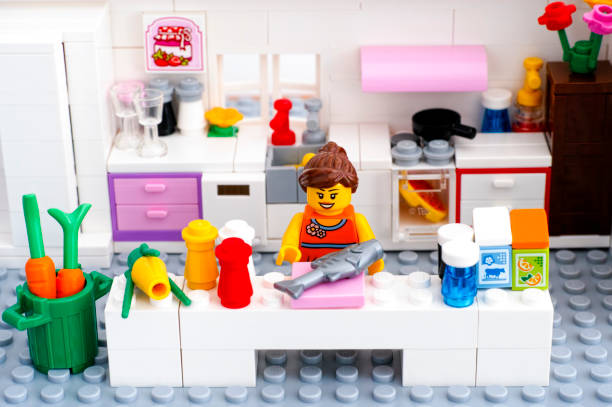
Top Picks: The Best Lego Tables
Here are some highly-rated Lego tables that combine storage, ergonomics, and creative design, based on parent reviews and product features:
- Delta Children Wooden Play N Store Building Bricks Play Table: This table features a large building surface and foldable legs for easy storage under a bed or sofa. It comes with over 100 building bricks and has a sleek, modern design that fits well in any room.
- KidKraft 2-in-1 Activity Table: This versatile table can be used for Legos on one side and flipped over for chalkboard use. It includes storage drawers and is made of sturdy wood.
- Nilo Multi-Activity Children’s Play Table: This table comes with interchangeable toppers for different activities, including a Lego-compatible board. It also has ample storage underneath.
When choosing a table, find out how it actually performs in terms of assembly, durability, and functionality. These tables are not only functional, but also highly praised for their practicality and design.
How to Build Your Own Lego Table
For those interested in a DIY project, building a Lego table with storage is a rewarding endeavor. Here’s a brief overview of how to build a Lego table:
- Choose a Base: Start with a sturdy table, such as an IKEA LACK table or a repurposed piece of furniture.
- Add a Building Surface: Glue Lego base plates to the top using strong adhesive like Gorilla Glue. Ensure the plates are aligned properly for seamless building.
- Incorporate Storage: Add drawers, bins, or shelves underneath. IKEA TROFAST units or plastic storage bins work well.
- Customize: Paint the table, add decals, or include features like lighting or a lip around the edge to keep pieces contained.
For detailed Lego table with storage plans, check out resources like The Spruce Crafts or I Like To Make Stuff for step-by-step guides and blueprints.
More Than Just a Table
A good LEGO table with storage does more than just keep your floor clean. It helps foster storage and organization habits, fosters focus, and makes room for imagination to flourish. A well-chosen or built LEGO table can transform a play area into a haven for creativity and organization. By considering ergonomics, storage needs, and versatility, you can find or build the best LEGO table that grows with your child and provides years of building fun.
If you’re searching for the best LEGO table, think beyond the surface and how it can serve as a tool to inspire creativity, a companion to organizational skills, and an evolving asset in your play journey. The right LEGO building table inspires building, creativity, and imagination while keeping the play space clean and accessible.
You May Also Like:
